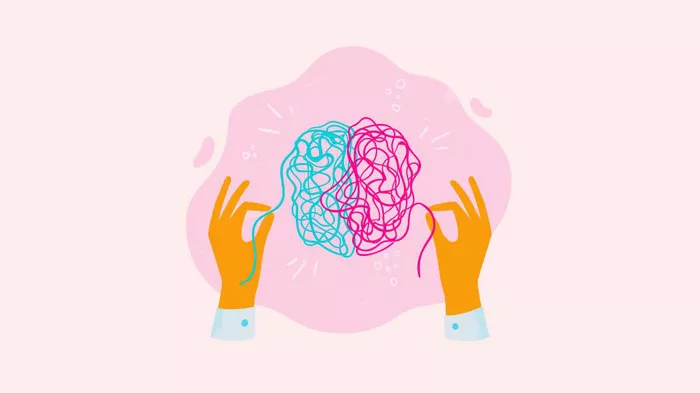Thought disorders represent a complex category of mental health conditions characterized by disorganized thinking and impaired communicative language. The symptoms of thought disorders often manifest as confusion in speech and writing and can significantly impact a person’s ability to function daily. This article delves into the nature of thought disorders, provides examples, explores underlying causes, examines the impact on individuals, and discusses treatment options.
What Are Thought Disorders?
Thought disorders, also known as formal thought disorders, are mental health conditions that primarily affect the way an individual thinks and communicates. These disorders are often identified by the way a person organizes their thoughts, resulting in speech and writing that can be hard to follow or understand. Clinically, these conditions are most often associated with schizophrenia but can also occur in other psychiatric disorders such as bipolar disorder, major depressive disorder, and neurodevelopmental disorders.
Characteristics of Thought Disorders
The primary characteristic of a thought disorder is disorganized thinking that appears as disjointed or incoherent speech. This can include tangential speech, loose associations, or “word salad,” where words are put together without any logical connection. Sufferers might also display neologisms (making up words), perseveration (repetition of words and phrases), and echolalia (repeating others’ words).
Example of a Thought Disorder: Schizophrenia
Schizophrenia is perhaps the most well-known example of a thought disorder. It is a chronic brain disorder that affects less than one percent of the U.S. population but has profound effects on those it touches.
Symptoms of Schizophrenia
Disorganized Thinking: Individuals with schizophrenia often experience disorganized thinking as evidenced by their speech. They may answer questions with unrelated answers, speak incoherently, or jump from one topic to another without clear connections.
Hallucinations: These are sensory experiences that appear real but are created by the mind. The most common hallucinations in schizophrenia are auditory.
Delusions: These are false beliefs that are not based in reality and may seem irrational to others but are held with high conviction by the sufferer.
Negative Symptoms: These include reduced ability to function normally. For example, the person may neglect personal hygiene or show a lack of emotion.
Pathophysiology of Thought Disorders
The exact cause of thought disorders is not fully understood, but several theories have been proposed to explain their development:
Biological Factors: Research suggests that abnormalities in certain brain areas involved in thinking and perception might contribute to thought disorders. Neuroimaging studies have shown differences in the brain structure and function of individuals with schizophrenia compared to healthy individuals.
Genetics: Thought disorders like schizophrenia have a strong genetic component. Having a family history of schizophrenia increases the risk of developing the disorder.
Environmental Factors: Exposure to viruses, malnutrition before birth, problems during birth, and psychosocial factors may contribute to the development of thought disorders.
Treatment and Management of Thought Disorders
Treating thought disorders can be challenging but is crucial for improving the quality of life for those affected. The treatment typically involves a combination of medication, psychotherapy, and support services.
Medication: Antipsychotic drugs are the cornerstone of treatment for schizophrenia and other severe thought disorders. These medications help reduce the severity of symptoms and prevent relapses.
Psychotherapy: Various forms of psychotherapy, including cognitive behavioral therapy (CBT), can be helpful. CBT can assist individuals in challenging and changing unhelpful beliefs and behaviors, improving emotional regulation, and developing personal coping strategies.
Support Services: Community support services can include job training, social skills training, and supported employment. Family therapy can also play a crucial role in treatment by helping family members understand the disorder and providing strategies to support their loved one.
Impact of Thought Disorders on Daily Life
Thought disorders can severely impact all areas of an individual’s life, affecting their ability to perform daily tasks, maintain employment, and cultivate relationships. The unpredictable nature of thought disorders often leads to social isolation and stigma, which can exacerbate the symptoms.
Living with a Thought Disorder
Living with a thought disorder requires ongoing treatment and support. Individuals with thought disorders can lead fulfilling lives with the proper management and support. Education about the condition, ongoing therapy, medication management, and social support are crucial for those affected.
Conclusion
Thought disorders represent a significant and complex component of mental health, requiring a nuanced understanding and comprehensive care approach. With appropriate treatment and support, individuals with thought disorders can manage their symptoms effectively and lead meaningful lives. As research continues to evolve, it is hoped that further insights will lead to even more effective treatments and improved outcomes for those affected by these challenging conditions.
[inline_related_posts title=”You Might Be Interested In” title_align=”left” style=”list” number=”6″ align=”none” ids=”8035,7974,7935″ by=”categories” orderby=”rand” order=”DESC” hide_thumb=”no” thumb_right=”no” views=”no” date=”yes” grid_columns=”2″ post_type=”” tax=””]































